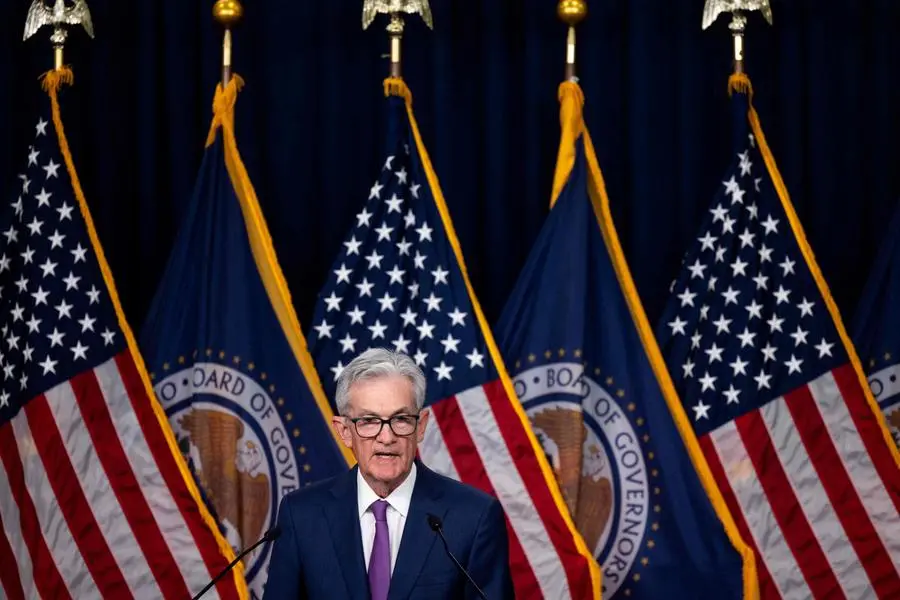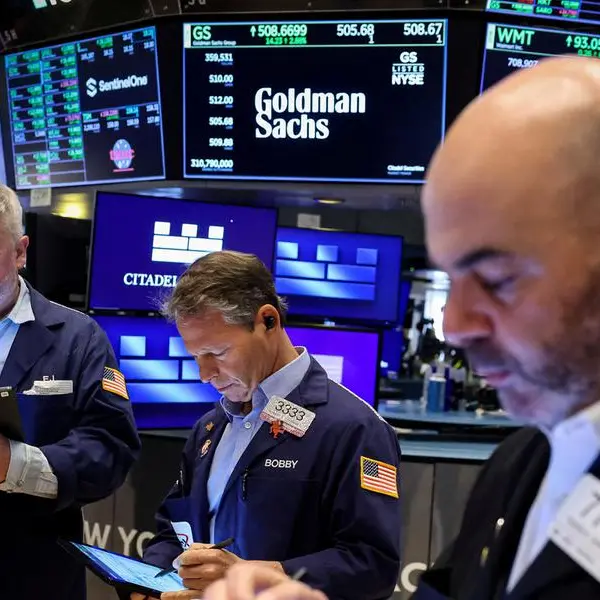PHOTO
The US Federal Reserve voted Wednesday to leave interest rates unchanged for the fourth straight meeting, while indicating it was moving toward future cuts -- but probably not before May at the earliest.
The Fed confirmed in a statement that it was holding its benchmark lending rate steady at its 23-year high, between 5.25 and 5.50 percent.
The central bank has a dual mandate to keep both inflation and the unemployment rate low, and has been heavily focused at recent meetings on reining in inflation, with an eye on its long-term target of two percent.
On Wednesday, it said the "risks to achieving its employment and inflation goals are moving into better balance," suggesting a greater emphasis on jobs going forward.
But it added that the rate-setting Federal Open Market Committee (FOMC) is unlikely to start cutting interest rates "until it has gained greater confidence that inflation is moving sustainably" toward two percent.
"We believe that our policy rate is likely at its peak for this tightening cycle," Fed Chair Jerome Powell told reporters at a press conference after the rate decision.
He added that 'almost everyone' on the 19-person FOMC was in favor of a cut in 2024, but that a move as soon as the next meeting in March was unlikely.
"I don't think it's likely that the committee will reach a level of confidence by the time of the March meeting to identify March as the time to cut," he said.
Powell's remarks "reinforce our long-standing view that the Fed will start cutting rates in May," EY chief economist Gregory Daco wrote in an investor note after the press conference.
Stocks on Wall Street closed down sharply on Wednesday as traders digested the news.
- Strong data -
Following a post-pandemic surge in inflation, fueled further by the Russian invasion of Ukraine, the Fed rapidly hiked interest rates to slow rising prices -- with surprising success.
The US central bank's favored inflation measure, which strips out volatile food and energy prices, has now fallen below an annual rate of 3.0 percent, while economic growth remained robust at 2.5 percent in 2023 and unemployment stayed close to historic lows.
Fresh data published by ADP ahead of the Fed's rate decision Wednesday showed that private sector hiring has cooled more than expected this month, further underscoring the Fed's progress.
"The economy is broadly normalizing, and so is the labor market," Powell told reporters.
"Powell expressed a bit more confidence that inflation had slowed than we had expected at this meeting," Citi economists wrote in a note to clients after the meeting.
"But by guiding away from March he also indicated that the Fed is not overly anxious to cut rates," they added.
- 'Greater confidence' needed -
In its December rate meeting, the Fed raised its economic outlook for the year ahead, and signaled it expects as many as three quarter-percentage-point rate cuts in 2024, sparking optimism in financial markets that the central bank could cut rates as soon as March.
When the Fed lowers interest rates, US consumers get cheaper access to credit, meaning the cost of everything from car loans to mortgages falls, while company valuations see a boost.
Heading into this meeting, traders and analysts were divided between those who believed the first rate cut would come in March, and those who expected the Fed to tread more cautiously and move in May instead.
Futures traders, who have oscillated over a possible March cut in recent weeks, moved firmly away from such an eventuality, according to AFP analysis of CME Group data.
They are much more confident of a cut the following meeting, assigning a greater-than-90 percent probability that the Fed will have a lower key lending rate by May 1 than it does now.
"There was nothing in the post-meeting statement that warrants a change to our forecast for the first rate cut to occur in May," Oxford Economics chief US economist Ryan Sweet said in a note to clients Wednesday.
Powell's guidance, "together with some potential bumpiness in upcoming core inflation readings, led us to leave our call for a first rate cut in June," the economists at Citi wrote.
"But we would not be too surprised by a first cut in May."





















